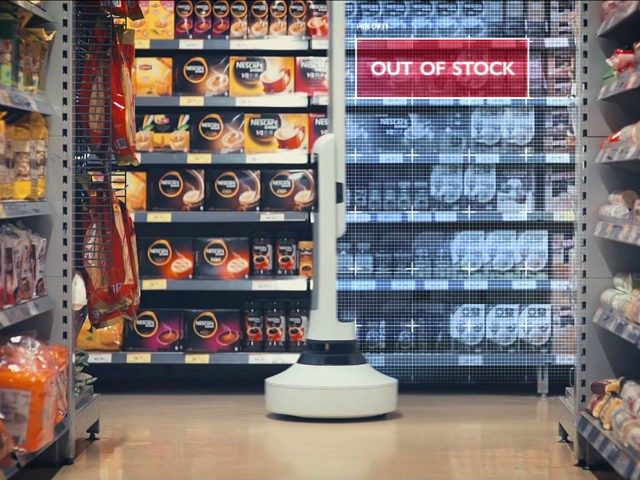Grocery store employees taking inventory by hand will soon become a thing of the past, thanks to a new robot named Tally that is taking one St. Louis-area supermarket by storm.
Tally, the grocery-stocking robot, is set to roam the aisles of Schnucks, a Midwestern supermarket chain, Monday in Richmond Heights for a six-week test run, the St. Louis Post Dispatch reports.
The slender robot, developed by the San Francisco-based company Simbe Robotics, weighs about 30 pounds and contains sensors that detect the store’s layout and notifies store management when products are not fully stocked.
When the robot runs out of power, it automatically goes to a charging station to recharge. Its sensors also detect when there is a large crowd of people, so the robot knows to stay out of areas where there are a lot of shoppers.
If the test is successful, a second Tally will appear at Schnucks locations in Town and Country and in Kirkwood in a few weeks.
“We’re excited to see what this partnership brings,” Dave Steck, the chain’s vice president of IT and infrastructure, said in a statement commenting on the store’s partnership with Simbe Robotics. “This is just one of many ways that Schnucks is staying at the forefront of technology to enhance our customers’ shopping experiences.”
Simbe Robotics also tested Tally out in a San Francisco Target store in April 2016 for a week.
Other supermarkets across the U.S. are exploring similar technologies to make stocking grocery items more efficient and eliminate the need for paid employees in some instances.
Walmart filed a patent in March to use airborne drones to carry inventory to and from the store’s delivery areas.
Amazon launched Amazon Go in Seattle this year, an automated grocery store where customers would be able to purchase items through their Amazon accounts by simply taking the items off the shelves and walking out of the store. Customers would scan their Amazon app to enter the store and sensors that detect when an item is removed from the shelves would add that item to a virtual cart.
Once the customer leaves the store, that customer’s Amazon app would be charged for any groceries taken out of the store.
The automation trend is not limited to grocery stores either. McDonald’s and other fast food restaurants have already rolled out automated ordering kiosks that eliminate the need for cashiers.

COMMENTS
Please let us know if you're having issues with commenting.